Aspidistra: description, varieties and care recommendations
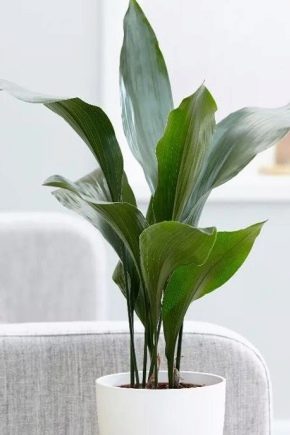
Indoor plants have been constant human companions for many decades. Green helpers are able to revitalize and decorate any room, as well as purify the air and improve the climate. Biologists count several hundred types of indoor flowers. For several decades, tropical plants brought from other countries have been in demand. Decorative flowers quickly and easily adapt to new climatic conditions and become pets in many European countries. A striking representative of this group of plants is aspidistra.
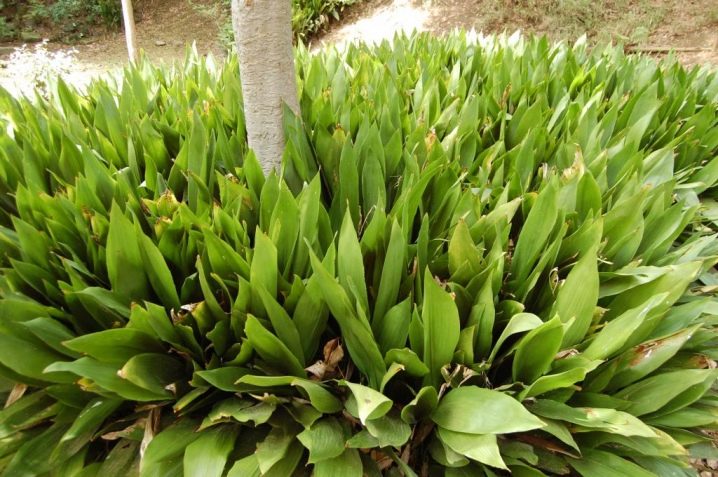
Specifications
Aspidistra (cast iron tree) is an ornamental leafy flower that belongs to the Asparagus family. Because of its unpretentiousness, the plant is often called the cobbler's palm. The natural habitat of aspidistra is tropical and subtropical climatic latitudes with darkened and cool forests. The plant feels comfortable in Asia, China and Japan. The second name of the aspidistra is a friendly family.
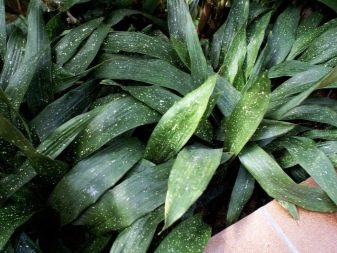
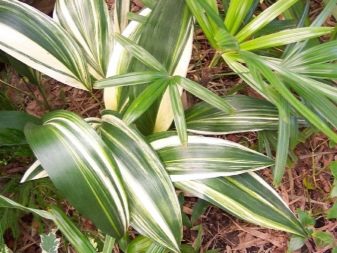


The flower's root system appears to be compacted and partially located on the soil surface. The leaves are formed from basal cuttings and have a dark green tint. The maximum height of elongated leaves with a lanceolate shape is 80 cm, and the width is 15 cm. Some varieties have beige stripes on the surface of the leaf plate. The formation of small purple flowers occurs in the perianth. The shape of the seed is pear-shaped.
A plant of this type very rarely forms inflorescences at home. To obtain unusual flowers, it is necessary to bring the indoor climate as close as possible to the natural conditions in the homeland of the flower. The main feature of buds is their formation on the surface of the root system. Small purple inflorescences on the soil surface delight with their appearance only for 24 hours.
After the inflorescence withers, a small fruit with one seed begins to form.
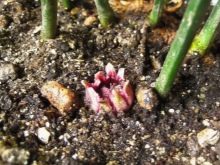

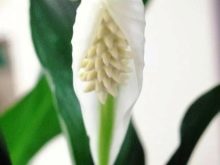
Among the huge number of advantages of this plant, biologists distinguish the following:
- undemanding to sunlight;
- ease of planting and maintenance;
- fast green mass gain;
- resistance to temperature extremes;
- air purification and release of phytoncides;
- sound absorption;
- visual zoning of living space;
- creating a bright point of attraction;
- the ability to grow in children's rooms;
- the presence of medicinal properties.
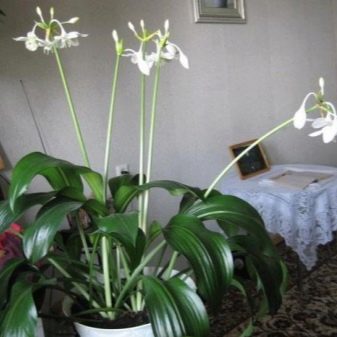
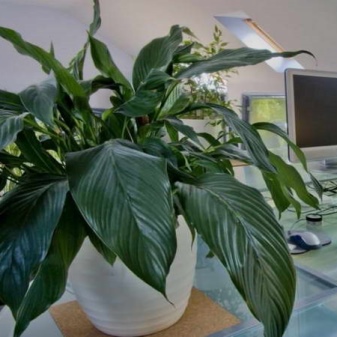
Aspidistra is not only an ornamental indoor plant, but also a medicinal flower. The flower sap has hemostatic, wound healing, countercurrent and disinfectant properties. Medicines made from aspidistra leaves are used to treat inflammation of the digestive and urinary systems, pneumonia, amenorrhea and gynecological diseases, as well as help to solve problems in the oral cavity.
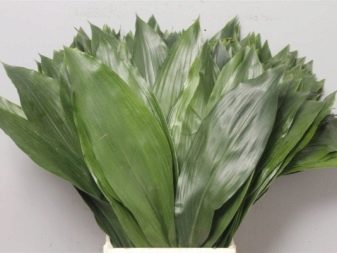
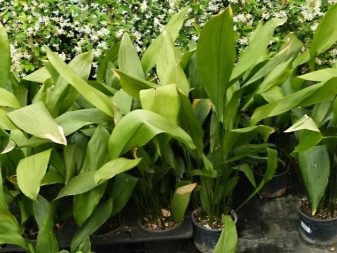
Views
Biologists identify several of the most popular types of this houseplant.
- Elatior Is a herbaceous tall perennial that has a creeping root system. The width of the leaf plate is more than 12 cm and has a dark green glossy color. The shape of the leaves that grow directly from the rhizome are lanceolate or oval. The eight-lobed perianth is yellow or crimson in color.The flowering period in indoor conditions is in the summer. The inflorescences are small and have a reddish-purple hue.

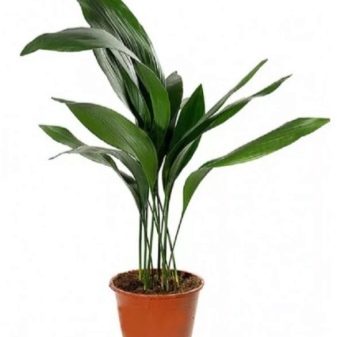
- "Milky Way" Is an evergreen fast growing variety that can be easily tolerated like ivy in low temperatures and drought. The structure of long leaves is rigid with milky spots on the surface of the leaf plate. These spots, resembling small stars, provoked the appearance of the second name of the flower - "Milky Way". At the end of winter, a houseplant can please with the appearance of small purple flowers.
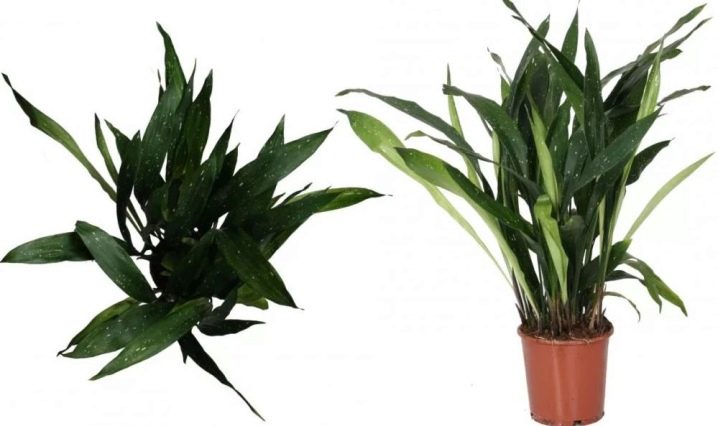
- Variegated - This is a short species, the maximum height of which is 45 cm. The plant is distinguished by its demands on air humidity, watering frequency and soil quality. The dark green leaves have vertical milky stripes. Improper care, application of a large amount of fertilizer and frequent watering can provoke the disappearance of these stripes.
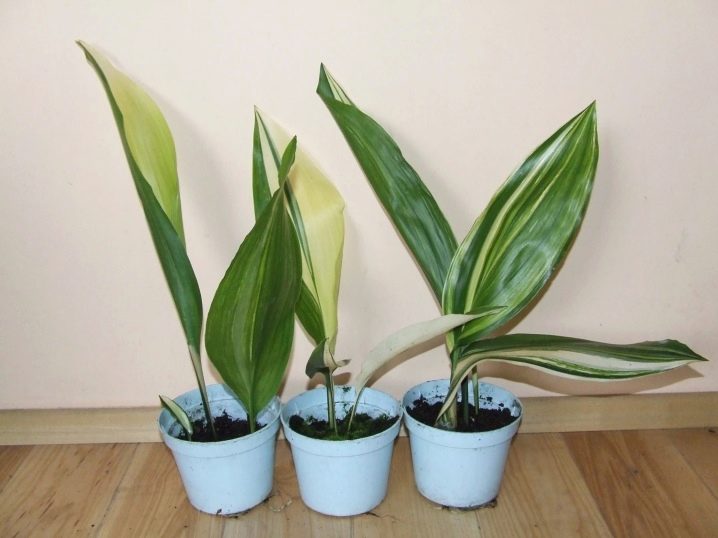
- Large-flowered Is a popular species native to Vietnam. The main feature is the ovoid shape of the leaves with contrasting spotting, the maximum height of which is 75 cm. This species blooms in mid-summer. Purple corollas are formed from basal buds. Bright and long petals with a deep purple color are formed along the edges of the corolla.
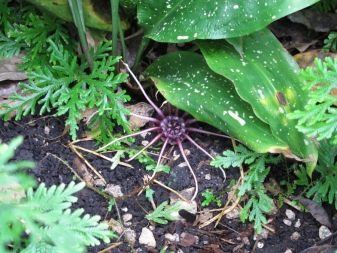

- Attenuata Is a fast growing variety with a creeping and round root system. The dark leaves are 50 cm high and 10 cm wide.
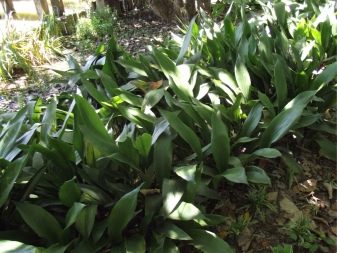
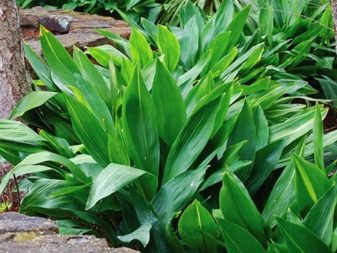
- Guanjou - This is a delicate variety, which is distinguished by thin roots and medium-sized leaves in the form of an ellipse. The long petiole is covered with yellow shapeless spots.
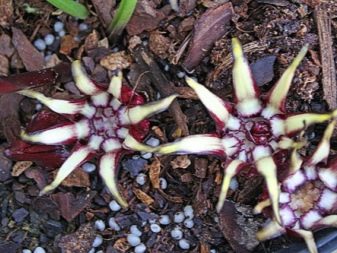
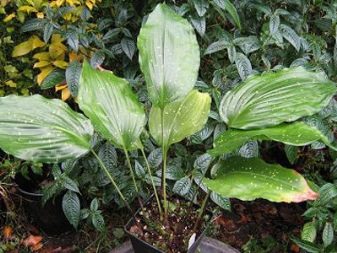
- Oblancefolia Is a Chinese cultivar with narrow leaves and small flowers. The color scheme of the leaves ranges from yellow-green to deep green.
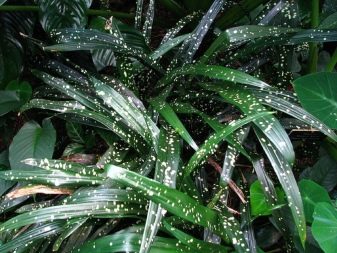
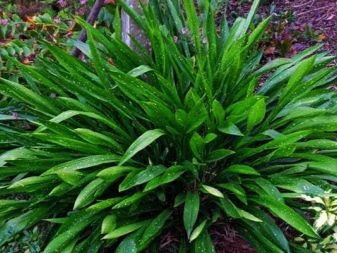
- Sichuan Is a Chinese species whose natural habitat is bamboo thickets. A distinctive feature is the presence of a strong and powerful creeping root system and separately growing leaves, the maximum height of which is 75 cm.The leaves consist of a leaf plate about 35 cm in size and a cutting, the height of which can reach 40 cm.The color of the leaves is dark green with spotted interspersed.
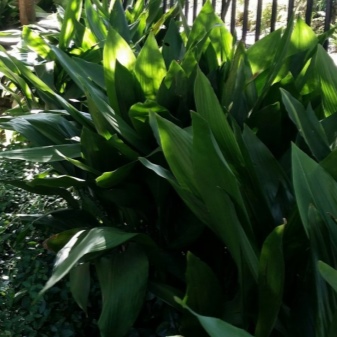

Reproduction
You can get a new plant using several methods of propagation.
Dividing the bush
The simplest and most popular breeding method is to divide the bush. A mother shrub that has more than 10 leaf blades can be divided into several parts. The number of leaves in each part should not be less than 4 pieces. Above the pots with young plants, it is necessary to build a small greenhouse and place the structure in a warm place. To prevent the flower from rotting, you need to ventilate the greenhouse daily, and also moisten the soil as necessary.
Experienced gardeners recommend removing the film only after the first young leaf appears.
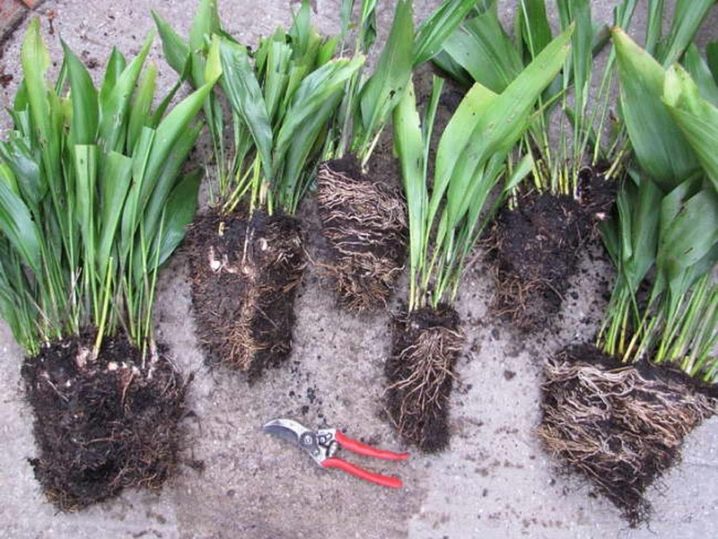
Rooting leaves
The leaf rooting method is more complex and takes a long period of time. The main advantage of flower propagation with the help of leaves is to obtain a new plant with all the varietal characteristics of the mother bush. Planting material for propagation is healthy leaves without petioles, the cutting of which is carried out with sharp and sterile tools.
To form the root system, it is necessary to place the leaf in a transparent sealed container with a small amount of water. The plant should be placed in a warm room with high light levels. After the roots appear, the planting material can be removed from the greenhouse and planted in a flower pot with a light deciduous substrate. A foil cap must be created around the young plant.
Only after the appearance of young leaves can the protective plastic film be removed.

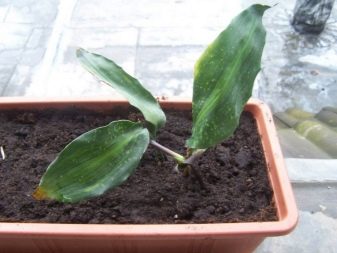
Seeds
The method of obtaining a new plant from seeds is the most difficult and time-consuming.Its main advantage is the ability to get a new variety of aspidistra. Finished seeds can be purchased at specialized garden stores. The selected seed material must be laid out on the surface of a container with nutrient soil and the soil must be moistened with a spray bottle. The number of seeds in one pot depends on the gardener's desire to carry out the subsequent picking of seedlings.
The plant reproduces quickly and without painstaking labor.
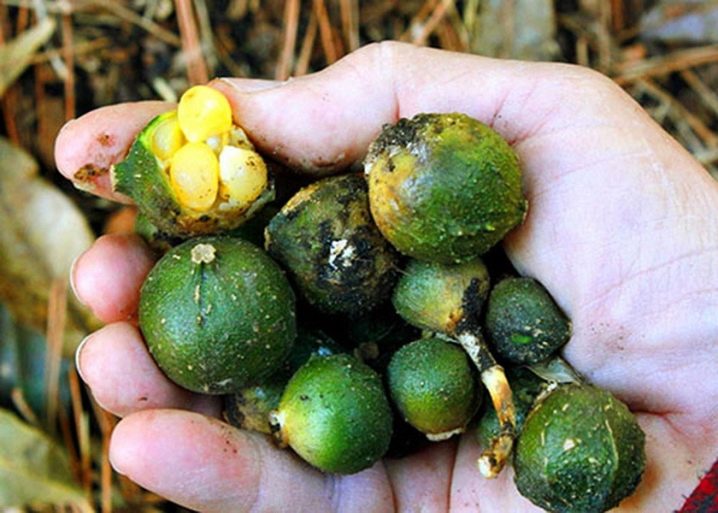
Transfer
An unpretentious plant does not need frequent replanting. Experienced flower growers recommend this procedure as the root system grows with an interval of 4 years. After acquiring a young plant, it is necessary to keep it in quarantine for several days. The flower needs to be watered regularly and refrain from feeding. The diameter of the new planting container should be at least 5 cm larger than the old pot and also have a higher height. The root system of the flower has a high growth rate, but its delicate and fragile structure does not allow for frequent replanting. The most suitable method for transplanting is transshipment.

The planted plant must be watered abundantly with settled water at room temperature.

Growing tips
Aspidistra is an unpretentious plant that is afraid of direct sunlight. Home care will not cause difficulties even for inexperienced flower growers. The flowerpot can be placed in any darkened place. A tall plant does not require special weaving devices. Varieties with variegated foliage need more light. In the absence of natural sunlight, the plant can grow and develop, receiving only artificial light.
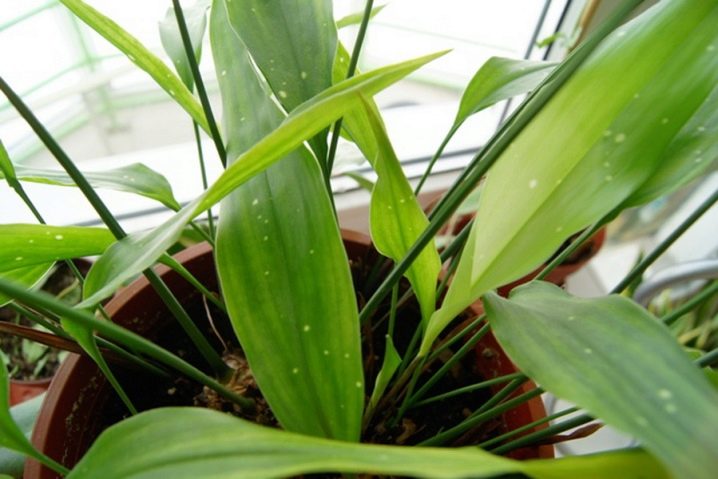
The optimal temperature regime in the summer is in the range from +20 to +25 degrees. In winter, the plant feels comfortable at +16 degrees. The flower is not picky about air humidity, but it needs regular dust removal from the leaves with a wet sponge. The plant prefers regular and moderate watering, which should be carried out after the top soil layer has dried. For irrigation, use settled water at room temperature. In winter, at an air temperature of no more than +18 degrees, it is enough to moisten the soil once every 2 weeks.
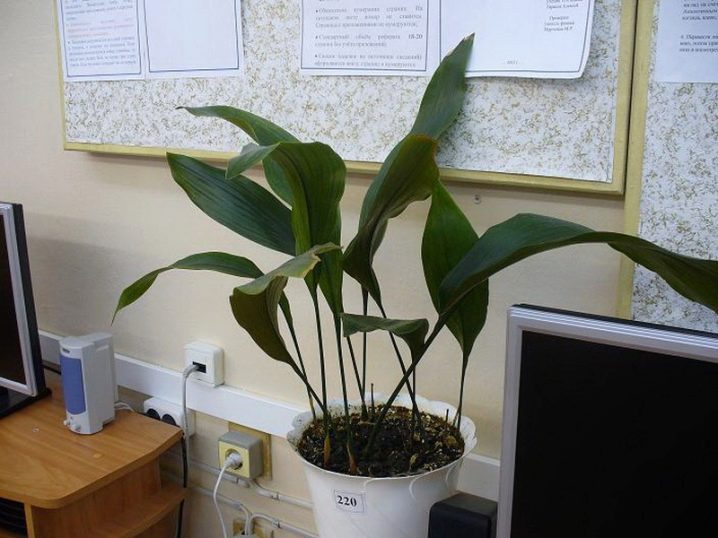
It is strictly forbidden to use non-settled water for irrigation, which contains a large amount of mineral elements and salts. Together with water, the tuber transfers to the leaves and dissolved salts, which, when evaporated, are deposited on the leaf plate and provoke the development of burns. With prolonged use of poor quality water, the flower can not only get sick, but also die.
Experienced gardeners recommend a timely plant transplant. If the root system has completely filled the entire volume of the planting tank, the flower stops growing and stops forming new leaves.
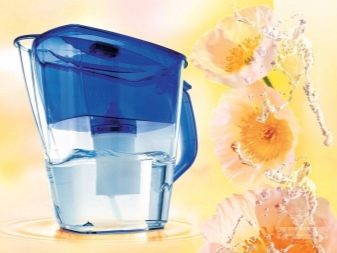
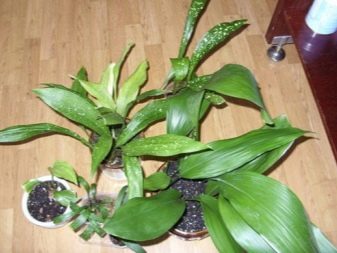
Aspidistra responds positively to the timely application of mineral and organic fertilizers. To carry out feeding, it is necessary to purchase complex fertilizers for deciduous ornamental plants in specialized stores. Varieties with bright spots do not need feeding, which can cause the spots to disappear.Pruning of aspidistra is carried out only in sanitary measures, when dry and damaged leaf plates appear among healthy and bright leaves. You need to cut off the diseased leaf at its very base.
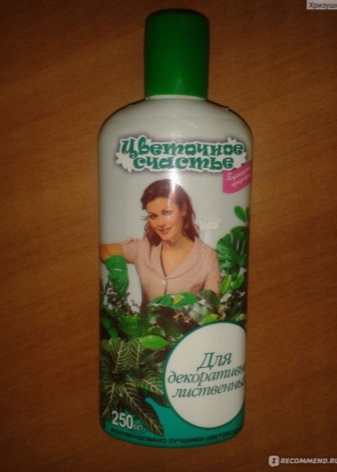
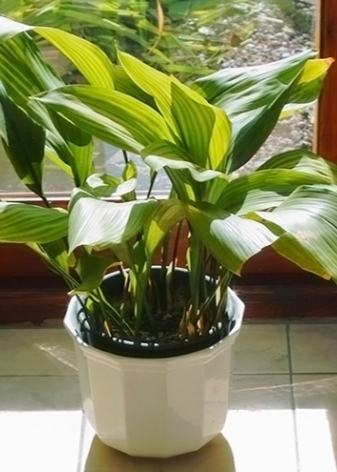
When growing aspidistra, a number of the following problems can arise:
- dark spots on the leaf plate - the consequences of sunburn; treatment - placing a flower pot away from direct sunlight;
- decay of the root system - the consequences of prolonged waterlogging of the soil; treatment - normalization of watering frequency;
- yellowing of the leaf plate - a sign of aging or damage to a flower by dangerous insects, biologists identify several of the most common pests - spider mites and scale insects; treatment - treatment of the plant with special chemicals;
- wilting of foliage - non-compliance with the irrigation regime; you can restore the plant with the help of moderate and regular soil moisture;
- drying of leaves - the presence of a low level of humidity in the room; treatment - increasing the number of sprays;
- color change - a sign of excessive fertilization and low light levels;
- lack of young shoots - a sign of a lack of nitrogenous elements; treatment - fertilizing the plant with a urea solution.
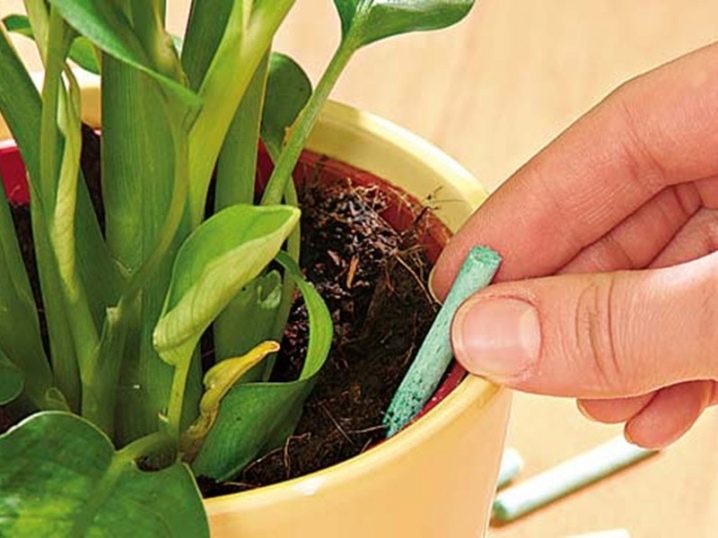
Examples in design
Aspidista is a versatile plant that can be used not only to decorate apartments, offices and social facilities, but also to create bright and beautiful bouquets with its help. The main advantages of this plant in floristry are its high aesthetic characteristics, the ability to give the desired shape to the bouquet, as well as its harmonious combination with a large number of flowers.
Compositions with aspidistra and roses, calla lilies, lilies, chrysanthemums and gerberas can be used to decorate various events and special occasions.
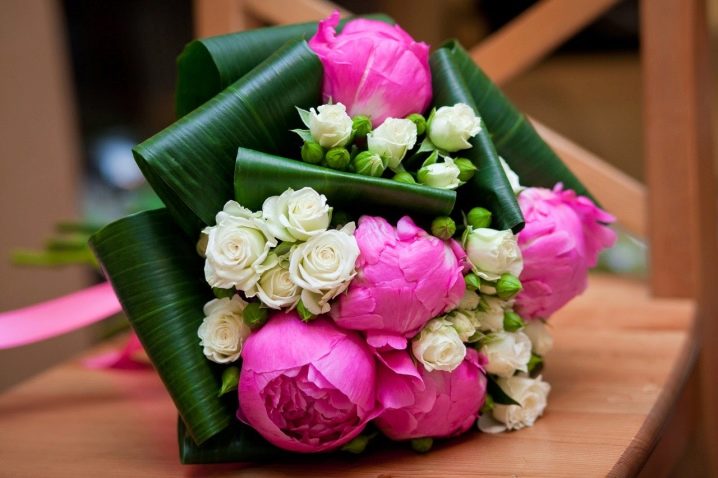
Experienced housewives recommend growing a flower in the kitchen, where there is a large accumulation of the smell of burning and smoke. Aspidistra not only absorbs all dust and toxic substances as a vacuum cleaner, but also humidifies the air.
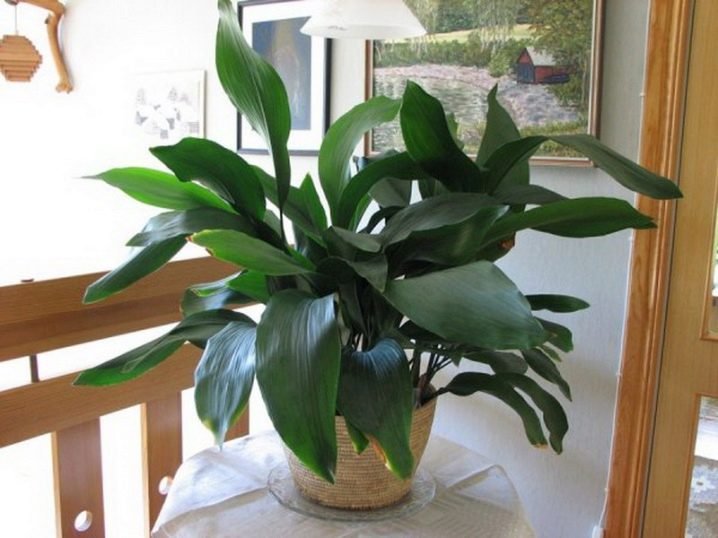
The absence of toxic substances in the sap of the plant allows you to make flower zones from aspidistra in the nursery. The flower stabilizes the child's psyche, improves memory and attention. The cast iron flower is absolutely safe for pets. In the summer, large flowerpots with a plant can be taken out into the street and decorate the local area with them. In climatic zones where the temperature in winter does not drop below 0 degrees, gardeners use the flower for designer garden decoration.

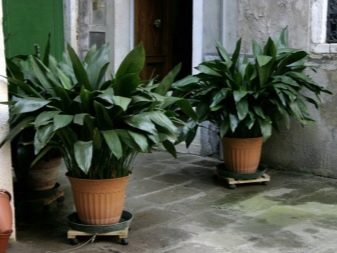
Cast iron wood looks especially impressive in large office spaces. The flower, planted in stylish and beautiful pots, will emphasize the chosen stylistic direction and improve the atmosphere in the work area. For many decades, indoor flowers have been a traditional decoration of any room, along with interior items, paintings and textiles. Each experienced housewife tries to grow several of the most beautiful plants on her windowsill.
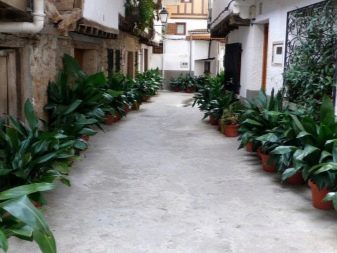
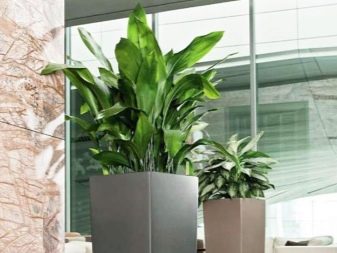
Before buying a flower you like, it is imperative to study its properties and influence on the home atmosphere, as well as the features of care. Florists consider aspidistra a win-win option, which will not only purify the air and have a positive effect on the emotional state of all family members, but also help cure some diseases.
For information on how to properly care for adspidistra at home, see the next video.























The comment was sent successfully.